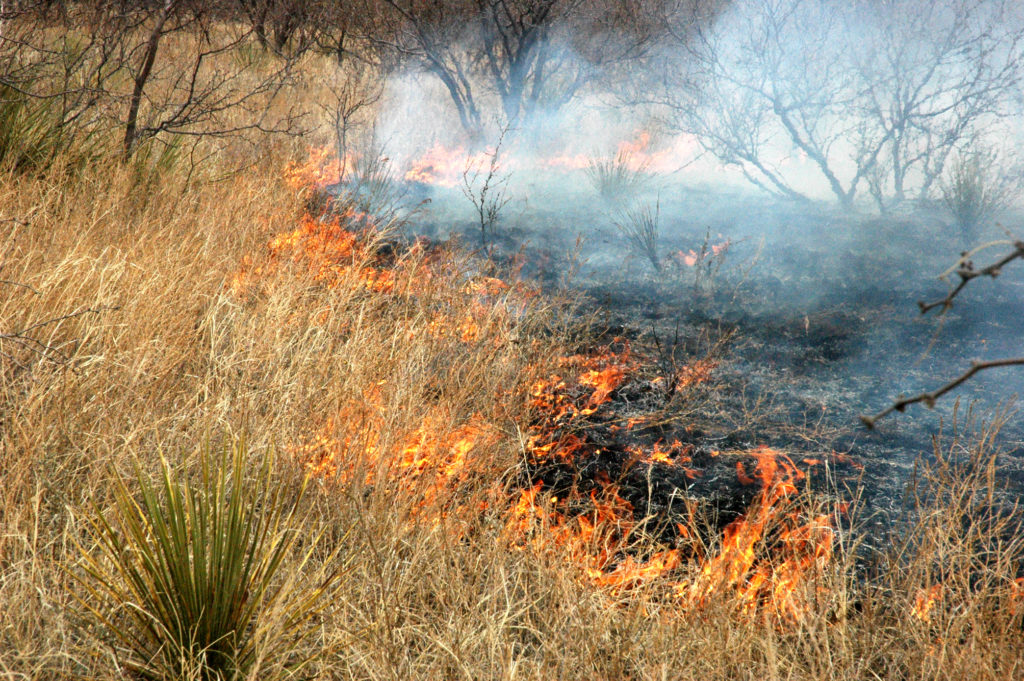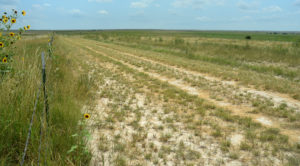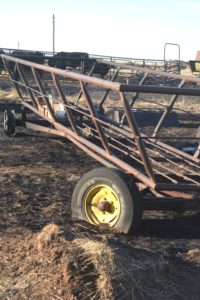AgriLife Extension offers ranchers, landowners wildfire preparation tips

AMARILLO – With the wildfire season really heating up, the Texas A&M AgriLife Extension Service is offering several fact sheets to help homeowners prepare for and mitigate wildfire damages.
“We had a fabulously wet spring, we grew a lot of grass and now it has been dry,” said Tim Steffens, Ph.D., AgriLife Extension range management specialist in Canyon. “These little rains we’ve been having aren’t going to change that until we have a good snow on the ground.”
Wildfires burning in the thousands of acres have already dotted the High Plains, Rolling Plains, Central and West Texas.
“Fire is an imminent danger, and people need to get ready for it, understanding that any particular day they could have a fire come their way,” Steffens said.

Two publications covering wildfire behavior and emergency responses that can help protect property and lives when wildfire occurs are offered by Steffens and Morgan Treadwell, Ph.D., AgriLife Extension range specialist, San Angelo.
Wildfire Behavior and Emergency Response and Safeguarding Against Wildfire are available in the AgriLife Extension Bookstore under the search term “wildfire.”
Treadwell also has a Wildfire Ready Checklist fact sheet to help landowners develop a profile specific to their property.
Steffens said ranchers can start with fuel breaks of any kind.
“Grazing them in, with the use of temporary fencing, is really my preference,” he said. “Disking or blading opens the land up to more erosion than if you graze it out, but it is better than nothing. These will stop small fires starting out in the ditch along the roadway, but when high winds and low humidity combine to push a wildfire, a 20- to 30-foot firebreak won’t stop it.”
Steffens said doing some strategic grazing and moving cattle from one pasture to another will help manage fuels one pasture at a time.

“This will make sure your cattle will have somewhere to go for protection,” he said. “Moving them into a pasture they just came out of when a fire occurs allows them to get away from the high heat and flames.”
He said the best plan is to “plan ahead,” so if you have cropland as well as rangeland when March and April come around, the livestock can be pastured near a plowed field where they can escape a wall of fire onto dirt.
“That way you have somewhere for them to go pretty quickly,” Steffens said.

Another piece of advice is to start fireproofing the headquarters as much as possible. Put in gravel where possible, keep the weeds low and make sure nothing is piled alongside the house or buildings. More information is offered in the publications.
“In our bulletin, we talk about how you need to have a lot of caliche if you can, where there is nothing growing around the headquarters,” Steffens said. “If you can get all the equipment there, then the fire may burn around it, but those items can be safe.
“Also, if the fire season really heats up, it won’t be a bad idea to get family heirlooms gathered up and put things where you can grab them up and get out quickly.”
Treadwell said prescribed burning can be an effective tool to protect headquarters or structures from future wildfires.
“Decreasing and/or removing fine fuel loads surrounding homes, barns, hay storage or other structures is one of the most effective ways to combat wildfires, especially fast-moving, wind-driven fires,” she said.

Prepping roads or perimeter fire breaks with burnout operations widens the fire break and provides an extra buffer from lofting embers from an active fire.
But Treadwell warns that any prescribed fire or burnout operation this time of year needs to be thoroughly thought out and successfully executed within appropriate weather conditions.
“Start early and have adequate personnel and equipment to handle the planned operation,” she said. “Proper notifications to county and state resources need to occur and, always check for local county burn ban status.”
For a complete list of wildfire-related documents concerning preparation, mitigation and recovery, go to: http://texashelp.tamu.edu/004-natural/fires.php.


